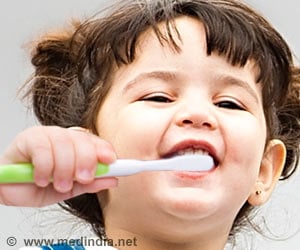Study reports the development of a film to prevent bacteria from growing on plastic alligners.
While clear, plastic aligners have grown in popularity as alternatives to bulky, metal braces, these appliances can become easily contaminated. A new study now reports in
ACS Applied Materials & Interfaces development of a film to prevent bacteria from growing on them.
According to the American Association of Orthodontists, more than 5 million people seek orthodontic treatments each year. These procedures include
braces
and aligners, a set of plastic pieces that shift the teeth slightly over time, in an attempt to fix crowded jaws, over- and under-bites and improperly aligned teeth. Clear aligners or retainers, known collectively as clear overlay appliances (COAs) are made by taking a dental cast and using pressure or heat on a plastic sheet. But bacteria frequently build up on COAs as difficult-to-treat biofilms, and the plastics easily wear down. Scientists have turned to developing simple and affordable coatings to combat this. Drawing inspiration from super-hydrophilic antibacterial coatings on other medical devices, Hyo-Won Ahn, Jinkee Hong and colleagues wanted to see if they could make something similar for COAs in the unique oral environment.
The researchers took a polymer sheet made of polyethylene terephthalate that was modified with glycol (PETG) and layered films of carboxymethylcellulose and chitosan on it. This layered film created a super-hydrophilic surface, or a surface that loves water, that prevented bacteria from adhering. When PETG with the film was compared to the bare material, bacterial growth was reduced by 75 percent. The coated plastic also was stronger and more durable, even when tested with artificial saliva and various acidic solutions.
Source-Eurekalert





















